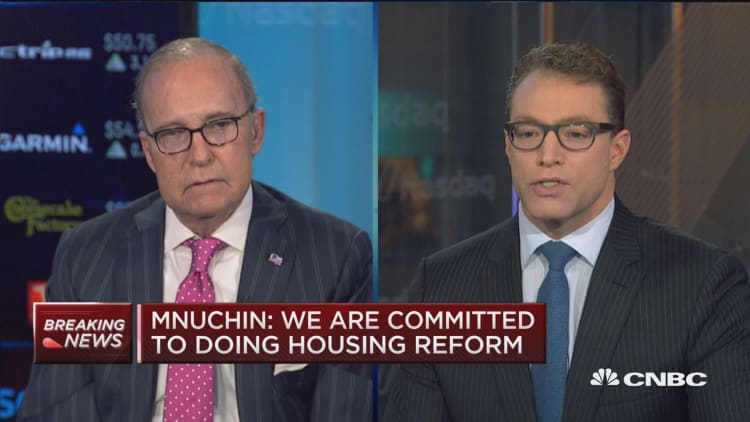
If there's one piece of the Trump administration's tax plans that nearly everyone agrees on, it's that the biggest windfalls would go to the wealthy. Everyone, that is, except Treasury Secretary Steven Mnuchin.
In an interview on CNBC in November, then-nominee Mnuchin said the wealthy couldn't get a tax break under the Trump tax plan.
"There will be no absolute tax cut for the upper class," he said said. "Any tax cuts we have for the upper class will be offset by less deductions that pay for it. "
The statement went viral and became known as the "Mnuchin rule" — never mind that every organization and tax expert who looked at Trump's plan found the opposite.
The nonpartisan Tax Policy Center said there aren't nearly enough deductions in the tax code to offset a drop in the top rate from 39.6 percent to 33 percent. The Tax Foundation said Trump's plan would give the top 1 percent of earners a tax cut of greater than 10 percent, and the middle class would see a roughly 2 percent cut.
There was no getting around the math: the highest earners got the biggest breaks, whether on a dollar or percentage basis. Mnuchin continued to stand by his namesake rule.
Until this morning. In an interview with CNBC, Mnuchin cited all the "commentary" about his rule. And while he reiterated that the administration's goal is to help the middle class, he was slightly more equivocal about the enforcement of his rule and how it impact the upper echelon.
"As I've said before, we're primarily focused on a middle-income tax cut and simplification for business," Mnuchin said. "What we are focused [on] is that on the high end, if there are tax cuts, that they are offset with [a] reduction of deductions and other things. So it's something we're going to carefully look at."
When pressed further on whether he was sticking by the rule, Mnuchin said: "We haven't finalized the plan, but our objective and what I said before still stands. You know, kind of the devil is in the details when we run the numbers."
In other words, the "Mnuchin rule" is now more like the "Mnuchin objective." The administration is still aiming for it, but it will all depend on the details. Yet unless the details are radically different from the ones proposed, there will be no mathematical way the Mnuchin Rule can apply.
He and the administration can call it a middle class tax cut – which it is – but it will always be first and foremost a tax cut for the wealthy.


